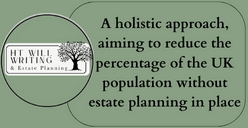In case you missed it see what’s in this section
Let's Talk
How to Achieve Gender Balance: Are We Close to a Solution?
Have you ever wanted to know further details on gender inequality? Well, for one thing, Britain ranks 11th out of 18 countries in Europe based on the pay gap between men and women, meaning its one of the worst countries in Europe for gender equality.
There are fewer women CEOs than men – of the FTSE 100 companies on the London Stock Exchange only seven are run by females. Women don’t apply for Science, Technology, Engineering and Mathematics courses or roles in anywhere near the numbers that men do, forcing universities to create deliberate events. Less than a third of our MPs are female.
In the very top table of discourse, women are still underrepresented. Guardian columnist Jane Martinson wrote about the meeting of world leaders at Davos and how almost 80% of the 8,000 delegates were likely to be male. It hardly seems reflective of the population, and also reveals that some companies will actively avoid trying to achieve equality – when a quota system was introduced in 2011, several companies actively avoided it or found ways around it. Thankfully, it would seem that 90% of panels this year will include at least one woman.
Via a combination of mathematical fact and anecdote, we know that gaps exist across the world. There are a huge number of questions, conclusions and discussions to be taken from these statistics. What can be done? Should anything be done? Does it matter? Are females themselves doing enough? Are males doing their part?
Many people would argue that something needs to change. It becomes more difficult when we consider private companies and corporations, simply because we do not know their routines for recruiting. One option is to alter hiring procedures, so that a certain number of women have to be shortlisted for given roles. The counter argument is that such affirmative action, or quotas, is inherently unfair. Is it really correct to deliberately modify your hiring procedures to include a set number of women for interview, even if they’re not applying for jobs in any number, or are not seemingly as qualified as other male applicants.
As an example, Ms Martinson also highlighted that only 1.8% of sport articles are written by women, but in other research, it was found that 1.9 million fewer women than men participate in sport on a regular basis. Are these two statistics intrinsically linked, and therefore is this due to discrimination or a lack of encouragement, or simply the fact that women are less interested in sport than men and therefore don’t apply for sports jobs? How many men write for maternity or fashion sites?
Perhaps there needs to be more focus on men, and the practical steps that could be taken. Perhaps we need to look more at the benefits of gender-balanced leadership teams. Perhaps we need to look at pay, although no gender pay gap should exist: The Equal Pay Act 1970, to be followed by the Equality Act 2010 made it illegal.
Recent research found that the difference in pay between men and women in their 20s is around 5%, but this tends to grow as they get older and their life circumstances change. It might be as much as 18%. However, this pay gap is closing with each generation, and from 2018 companies with more than 250 employees will have to disclose salaries and bonuses to male and female staff. All pay (computed on HR software) will be available to all, providing HR managers with oversight - which should, theoretically, end any pay-gaps completely, and take us another step closer to true equality.
Weather in Bath
Listings


















